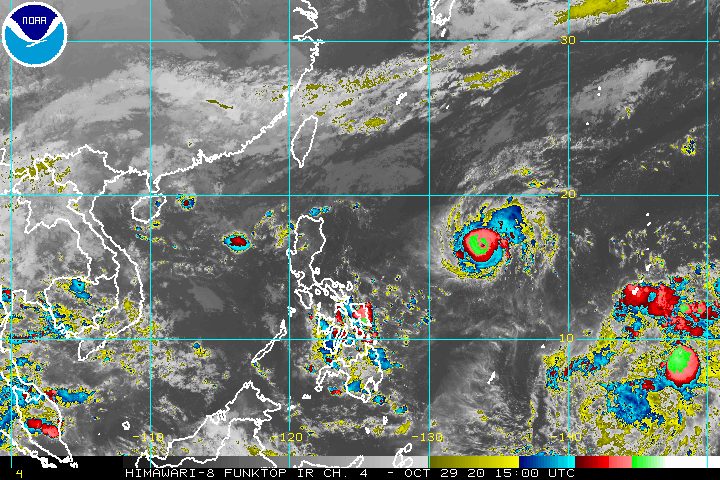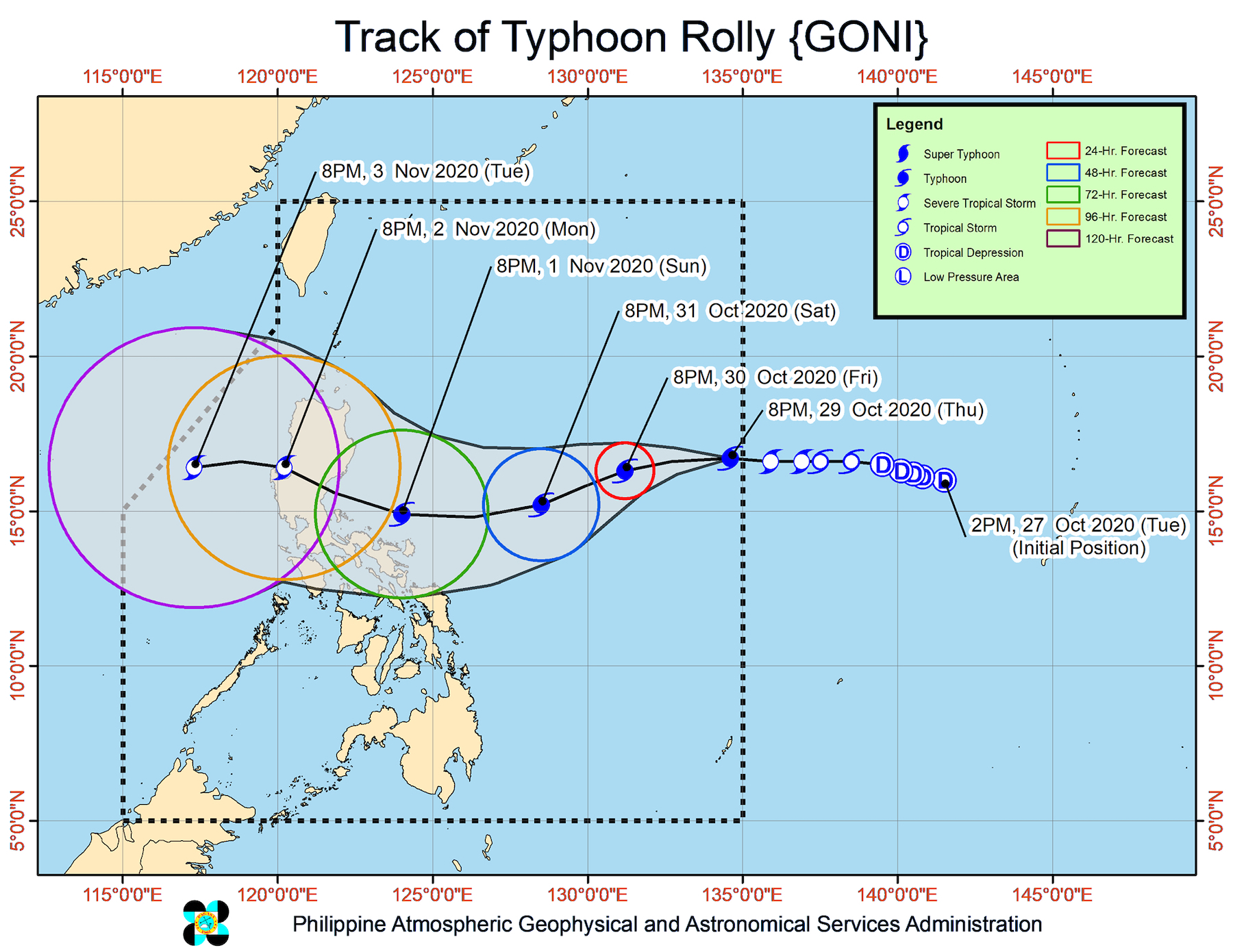SUMMARY
This is AI generated summarization, which may have errors. For context, always refer to the full article.

Rolly (Goni) entered the Philippine Area of Responsibility (PAR) as a severe tropical storm at 5:30 pm on Thursday, October 29, then swiftly strengthened into a typhoon at 8 pm.
In a bulletin released past 11 pm on Thursday, the Philippine Atmospheric, Geophysical, and Astronomical Services Administration (PAGASA) said Rolly is now 1,280 kilometers east of Central Luzon.
It is moving west at 20 kilometers per hour (km/h), heading for the Central Luzon-Quezon area, where it could make landfall on Sunday evening, November 1, or Monday morning, November 2.
Rolly now has maximum sustained winds of 120 km/h and gustiness of up to 150 km/h. PAGASA warned that it will continue to strengthen over the Philippine Sea, and may hit land with maximum sustained winds of 165 to 185 km/h, its possible peak intensity.
So far, tropical cyclone wind signals are not yet raised. But PAGASA said that “in anticipation of the arrival of strong to near-gale conditions” due to Rolly, Signal No. 1 could be raised over several provinces in the region of Bicol as early as Friday, October 30.
The state weather bureau also warned that since Rolly will likely gain more strength before hitting land, the highest possible tropical cyclone wind signal that may be raised would be Signal No. 3 or No. 4.
That would mean “destructive to very destructive typhoon-force winds” in areas directly in the typhoon’s path. (READ: FAST FACTS: Tropical cyclones, rainfall advisories)
In terms of rain, Rolly’s trough or extension may start bringing light to heavy rain to the following areas overnight until Friday morning:
- Bicol
- Eastern Visayas
- Central Visayas
- Caraga
PAGASA added that the typhoon’s rainbands will likely trigger rain beginning Saturday, October 31, or Sunday in these areas:
- Bicol
- eastern parts of Northern Luzon and Central Luzon

Meanwhile, the tropical depression outside PAR intensified into a tropical storm, and was given the international name Atsani.
Tropical Storm Atsani is 2,430 kilometers east of Mindanao, moving north at 20 km/h.
It now has maximum sustained winds of 65 km/h and gustiness of up to 80 km/h.
PAGASA said Atsani is likely to enter PAR on Sunday or Monday, which means there would be two tropical cyclones inside PAR at the same time.
But the state weather bureau said the tropical storm is “less likely to bring severe weather” to the country in the next 3 days.
When Atsani enters PAR, it will be given the local name Siony. (READ: LIST: PAGASA’s names for tropical cyclones in 2020)
Rolly is the Philippines’ 18th tropical cyclone for 2020, while Siony would be the 19th. Rolly is also the 5th tropical cyclone for October alone.
An average of 20 tropical cyclones form within or enter PAR each year.
These are PAGASA’s latest estimates for the number of tropical cyclones inside PAR in the next 6 months:
- November 2020 – 1 to 3
- December 2020 – 2 or 3
- January 2021 – 0 or 1
- February 2021 – 0 or 1
- March 2021 – 0 or 1
- April 2021 – 0 or 1
Last October 2, the state weather bureau warned Filipinos to expect more rain in the coming months due to the onset of La Niña. – Rappler.com
Add a comment
How does this make you feel?




There are no comments yet. Add your comment to start the conversation.